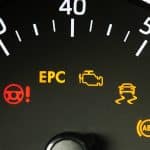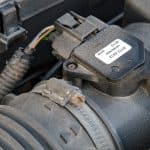
The intake manifold is one of the hardest working parts in the car. Whilst the part itself is quite sturdy and robust, one of the weaker points in the engine is the gasket seal that sits between the manifold and the cylinder head – which can often fail over time.
What are some of the tell-tale signs that your car is suffering from an issue with your intake manifold gasket?
Table of contents:
What is the Intake Manifold Gasket?
The intake manifold delivers a mix of air and fuel into the engine via its many internal chambers – ensuring that combustion is maximised. Every engine joint that needs a seal uses a gasket, which is like a durable rubber and plastic part that ensures that the seal remains good and does not permit leaks.
Over time, due to repeated exposure to high levels of heat that cause the gasket to expand and contract, the part can become cracked. This will allow fuel, air, and coolant to leak out of the engine, making it overheat.

Symptoms of an Intake Manifold Gasket Leak
Misfires
A crack in the gasket will allow air to escape from the engine, unbalancing the air fuel mixture and preventing all the fuel from igniting properly during the combustion process. As a result, unburned fuel can escape the engine before igniting on the hot exhaust, causing the fuel to explode in a misfire. It could also be worth checking the engine central control unit for misfire codes.
Decreased Acceleration
Even before misfires become a problem, you’ll notice issues with your gasket in the car’s performance as the first port of call. Because the air fuel mixture is unbalanced, you’ll often find that when you push the accelerator down, you don’t get the expected surge of power from the engine.
Stalling
Stalls usually occur when the engine ceases turning or it doesn’t turn quickly enough. When a vacuum leak occurs due to a faulty gasket, this can cause the car to stall repeatedly. Everyone expects to stall once in a while when at a junction – but if you find yourself repeatedly stalling, or stalling in other situations, then a gasket leak could well be the culprit.
Overheating Engine
It’s not just the air fuel mix that a broken gasket can upset. Coolant will also leak out of the seal causing the engine to get hotter, once all the coolant has been drained. If you find that your car is regularly overheating, and you need to repeatedly top up the coolant, then this could be a major sign that the gasket is having some issues.
Poor Fuel Economy
With all that disruption to the air fuel mix thanks to a broken gasket, you can also expect your vehicle’s fuel economy to suffer. You’ll notice that your tank is draining faster, and you’re having to return to the pump more frequently, as the engine consumes much more fuel than normal.

Coolant Leaks
Many vehicles have water jackets within the intake manifold for the purposes of cooling – in which case the gasket will protect against leaks to both the coolant and air fuel systems. If there is a fracture in the gasket, this could lead to an internal leak, which is characterised by strong smell of coolant in your vehicle’s cabin – or an external leak, leaving coolant running down from the cracked gasket. In the most extreme cases you might even see puddles of coolant under the car and steam rising from the engine.
Coolant in the Oil Sump
That escaping coolant we’ve only just mentioned can play havoc in the engine, especially if it permeates the oil sump. This will reduce the lubricating properties of the car’s oil – increasing the chances of friction and heat damage to systems that are protected by the oil. Keep a lookout for coolant in the oil sump, which can actually be easily spotted on the dipstick as a milky white residue in the oil.
Air Fuel Mixture
As we’ve pointed out, issues with the gasket will often lead to a poor air fuel mix. Because this works on an airflow system, it does mean that there are some clever tricks mechanics can employ to help hunt out a leak. Smoke can be fed into the part instead of air in the repair shop, allowing even an amateur to spot if the smoke is leaving the engine from a crack in the gasket.
Vacuum Leaks
When the gasket leak is allowing air to escape from the system it can be difficult to spot the leak. Let your engine idle for a while. Spray some carburettor cleaner on to the gasket and if the car idles faster, then you probably have a leak. Look for cracks in the rubber hoses that are attached to the engine – using your hands to feel along the lengths of the pipes.
And Finally
If you find out you have a broken gasket whilst out on the open road, you may be able to get away with driving it a little longer but it’s not going to get any better. Problems with the air fuel mixture can cause the car to run lean, creating heat or knock (pre-detonation) – which can quickly turn a good engine into a wreck. The heat can additionally give you a warped or cracked block – so even if you think you might be able to get away with driving with a bad gasket, we advise you to avoid it.













.png)